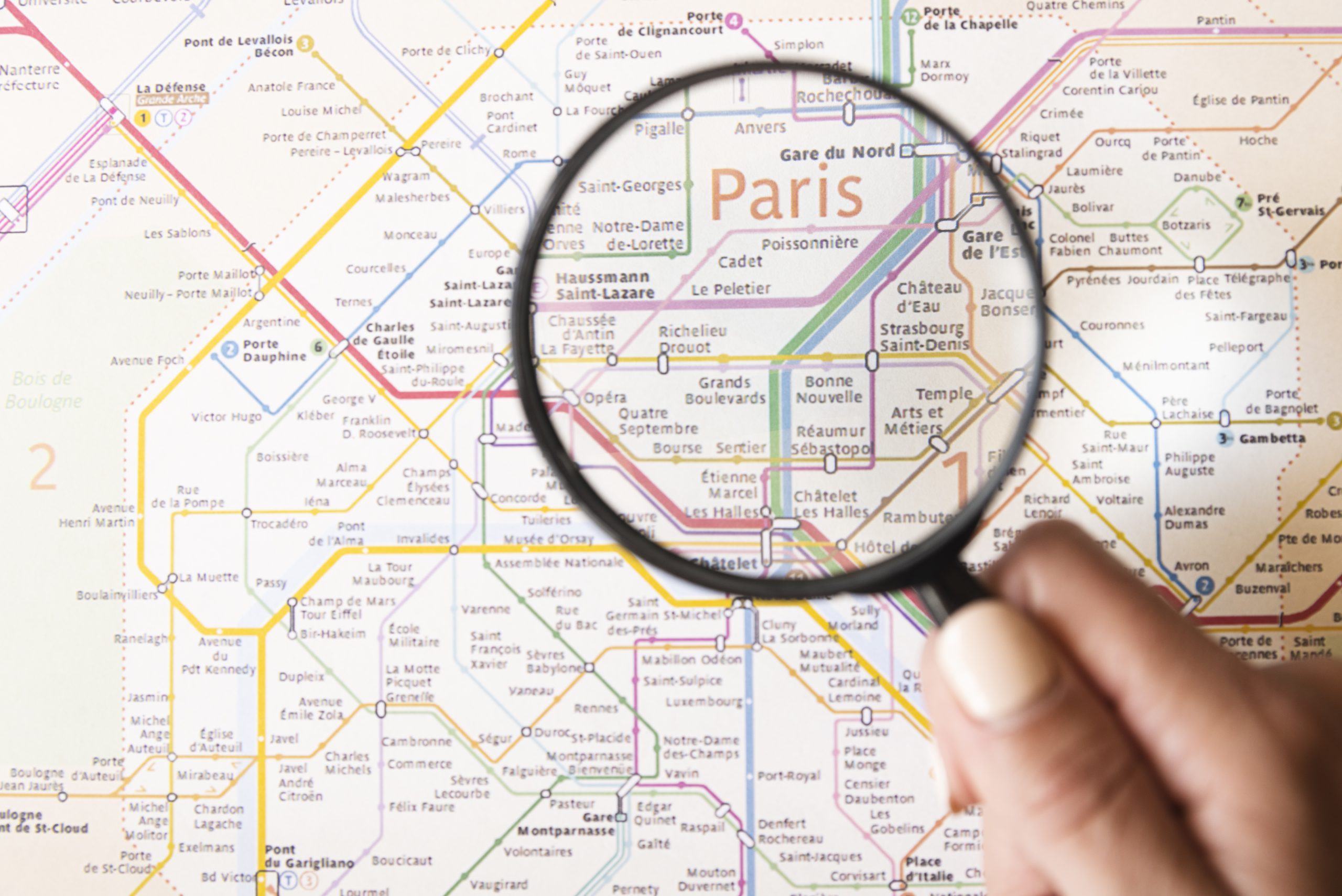✈️French Level 2, Activity 09: Bon voyage ! / Have a good trip! (Face-to-Face)
Products: Le Métro, Transport
Practices: Riding the Métro is almost unavoidable in Paris–this common mode of transportation is used as a way to traverse the City from underground.
Perspectives: The Métro is seen as an easy, efficient way to travel, and cuts out the need for a vehicle for many Parisians. Lately, it has also been seen as a benefit to cutting down emissions from cars and motorcycles.
NCSSFL-ACTFL World-Readiness Standards:
- Standard 1.1: Students engage in conversations or correspondence in French to provide and obtain information, express feelings and emotions, and exchange opinions.
- Standard 1.2: Students understand and interpret spoken and written French on a variety of topics.
- Standard 2.1: Students demonstrate an understanding of the relationship between the practices and perspectives of the cultures of the francophone world.
Idaho State Content Standards:
- COMM 1.1: Interact and negotiate meaning (spoken, signed, written conversation) to share information, reactions, feelings, and opinions.
- COMM 2.1: Understand, interpret, and analyze what is heard, read, or viewed on a variety of topics.
- CLTR 1.1: Analyze the cultural practices/patterns of behavior accepted as the societal norm in the target culture.
- CLTR 1.2: Explain the relationship between cultural practices/behaviors and the perspectives that represent the target culture’s view of the world.
- COMP 2.1: Identify, describe and compare/contrast products and their use in the target culture with the learner’s culture.
NCSSFL-ACTFL Can-Do Statements:
- I can navigate a foreign city using materials in French.
- I can give directions to my house.
- I can understand directions given to me.
Materials Needed:
- Google Slide Presentation
- Map of Brussels metro line
- City Maps
Warm-up
1. Begin by introducing the Can-Dos for today’s activity.
Aujourd’hui, nous allons parler des moyens de transport et utiliser les cartes pour voyager dans les villes francophones. (Today, we are going to talk about modes of transportation and using maps to travel through francophone cities.)
- Quels moyens de transport est-ce que tu as utilisé pendant un voyage ? (Which means of transport did you use during a trip?)
- Tu préfères lequel ? (Which one do you prefer?)
- Comment est-ce que j’arrive chez toi d’ici ? Indique-moi le chemin. (How do I get home from here? Tell me the way.)
Main Activity
1. Students will be stranded in a foreign city. With a partner they will choose one of the provided cities and figure out how they will get from point A to point B using maps (you should indicate this on their maps).
Avec un partenaire, vous êtes échoué dans une ville étrangère ! Choisissez une de ces villes : Lyon, Marseille, Algiers ou Montréal. Utilisez les cartes et/ou les plans de métro pour trouver la route que vous allez prendre pour arriver de point A à point B.
2. They must decide whether they will take the metro, bus, train, ferry, walk, etc. Students will present their route to the rest of the group.
Après, vous allez expliquer votre route au groupe (les lignes de métro, les arrêts, les trains, etc.)
3. Use this as an example:
Par exemple (show a map of the Brussels metro line) : “Je suis à l’arrêt “Rogier” à Bruxelles. Je vais à l’aéroport. Je vais prendre la ligne bleue jusqu’à l’arrêt “Arts-Loi” où je change à la ligne rose. Je prends la ligne rose jusqu’à l’arrêt “Schuman” où je change au bus pour arriver à l’aéroport. (For example (show a map of the Brussels metro line) : “I am at the “Rogier” stop in Brussels. I am going to the airport. I am going to take the blue line until the “Arts-Loi” stop where I will change to the pink line. I’ll take the pink line until the “Schuman” stop where I will change to a bus to arrive at the airport.)
Wrap-up
Ask the following question(s) to finish the activity:
- Après la discussion d’aujourd’hui, voulez-vous visiter une de ces villes ? (Do you want to visit one of these cities after today’s discussion?)
- Quelles villes francophones voulez-vous visiter ? (Which French cities do you want to visit?)
- Si je vous mettais dans une ville étrange, est-ce que vous pensez que vous pourriez arriver à l’aéroport ? (If I put you in a strange city, do you think you could arrive at the airport?)
End of Activity:
- Can-Do statement check-in… “Where are we?”
- Read can-do statements and have students evaluate their confidence.
- Encourage students to be honest in their self evaluation
- Pay attention, and try to use feedback for future activities!
NCSSFL-ACTFL Can-Do Statements:
- I can navigate a foreign city using materials in French.
- I can give directions to my house.
- I can understand directions given to me.
CULTURAL Resources
How to Remix a Pathways Project Activity
Feeling creative? The Pathways Project needs your help in remixing activities for the K-12 classroom.
Try taking an activity to the next level by:
- Add new content (something you’ve created or another OER source)
- Contribute additional activity suggestions
- Integrate authentic materials such as videos, infographics, photos, etc.
- Suggest how to implement the activity in the classroom
- Customize the content for a specific audience or group of learners (for example, K-5 learners or to differentiate for student’s needs)
We want to make it easy to share back with the larger Pathways Project Community! Simply, click this link to remix this activity.
Please consider sharing your remixed activity with us by emailing the activity link to Pathwaysproject@boisestate.edu so that Pathways continues to grow!


